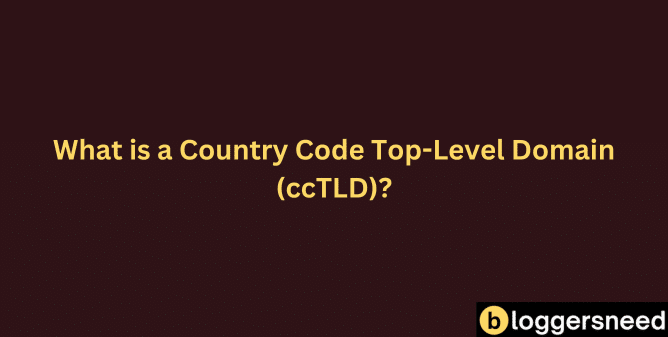
A country code top-level domain (ccTLD) is a two-letter identifier, such as .us, .uk, or .de, that represents a specific country, sovereign state, or dependent territory. There are over 300 delegated ccTLDs, managed by the Internet Assigned Numbers Authority (IANA), including traditional ASCII ccTLDs and internationalized ccTLDs (IDN ccTLDs) with native characters.
Using a ccTLD can boost local SEO, strengthen brand identity, and facilitate regional targeting. Registration processes vary by country, with some requiring local business presence or citizenship. Popular ccTLDs like .uk, .ca, and .au offer advantages over generic TLDs, especially for regional traffic; if you’re interested in learning more about these benefits and the registration process, you’ll find detailed insights ahead.
Table of Contents
What is a Country Code Top-Level Domain (ccTLD)?
A country code top-level domain (ccTLD) is an internet top-level domain specifically designated to represent a country, sovereign state, or dependent territory. ccTLDs are two-letter codes, such as ‘.us’ for the United States, ‘.uk’ for the United Kingdom, and ‘.de’ for Germany.
The history of ccTLDs began in the late 1980s, with early registrations including ‘.us’, ‘.uk’, and ‘.il’ in 1985. ccTLDs are managed by the Internet Assigned Numbers Authority (IANA) and are subject to regulations determined by each country’s domain name registration corporation.
According to Verisign, as of 2022, there were over 150 million ccTLD registrations, accounting for about 40% of the total domain name industry. These domains help search engines understand a website’s geographical targeting and can impact its visibility in search results.
What are the Types of ccTLDs?
With over 300 delegated ccTLDs, the types of country code top-level domains can be categorized based on their usage and restrictions.
You can distinguish between traditional ccTLDs, which use ASCII characters, and internationalized ccTLDs (IDN ccTLDs), which incorporate native characters from other languages, enhancing regional marketing and accessibility.
Traditional ccTLDs, such as .uk for the United Kingdom or .de for Germany, are widely used and follow ISO 3166-1 alpha-2 country codes. These domains are subject to ccTLD regulations, which can include restrictions on domain availability based on residency or local presence.
International SEO benefits from using ccTLDs, as they help search engines rank sites for specific geographic locations, improving visibility and relevance in regional searches.
This trend is particularly useful for businesses aiming to expand their online presence globally while maintaining a local focus.
What are the Benefits of Using ccTLDs?
Using a country code top-level domain (ccTLD) can greatly improve your online presence, particularly when targeting a specific geographic region.
This approach boosts your local SEO, as search engines grade country-specific domains, giving you a competitive advantage in local search results. A ccTLD also strengthens your brand identity by signaling relevance and trustworthiness to local users, which can lead to higher engagement and conversions.
Additionally, using a ccTLD facilitates regional targeting, allowing you to tailor content to local preferences and cultural nuances, thereby increasing market trust.
However, be aware of legal considerations, as some ccTLDs may have registration restrictions based on citizenship or affiliation with the country.
How to Register ccTLDs?
Here’s a quick step-by-step guide to register a country code top-level domain (ccTLD).
- Step 1: Choose the Right ccTLD, Identify the suitable ccTLD for your target country (e.g., .ca for Canada, .uk for the United Kingdom).
- Step 2: Check eligibility requirements, review any specific eligibility requirements for the ccTLD, such as local presence or citizenship.
- Step 3: Select a Domain Registrar, Choose an certified domain registrar that offers the desired ccTLD. Here are the 10 best domain registrars to register your domain name.
- Step 4: Search for Your Domain Name, Use the registrar’s search tool to check the availability of your preferred domain name.
- Step 5: Register Your Domain, If available, complete the registration process by providing necessary information and documentation.
- Step 6: Complete Payment, Finalize the registration by processing the payment and receiving confirmation.
- Step 7: Manage Your Domain, Access the registrar’s control panel to manage settings like DNS and email forwarding.
What Challenges Are Associated With Buying Cctlds?
Registering a country code top-level domain (ccTLD) can carry several challenges that you should consider before proceeding. One significant challenge is the differing pricing strategies for ccTLDs, as costs can vary considerably between them. For instance, some ccTLDs, such as .na, .ng, and .ne, can cost more than $5,000 to register.
Additionally, ccTLD market trends can affect availability and pricing, making it essential to stay informed.
Cctld legal issues also arise, such as eligibility criteria that may require a physical presence or local contact in the country of the ccTLD.
Cctld brand protection is another concern, as managing multiple domains can be complex and time-consuming.
What are Some Popular ccTLDs?
Popular ccTLDs vary widely, reflecting the diverse needs and preferences of different regions. When choosing a ccTLD, it’s essential to take into account the target audience and the regional ccTLD trends.
Listed below are the popular ccTLDs.
- .cn (China)
- .tk (Tokelau)
- .de (Germany)
- .uk (United Kingdom)
- .tw (Taiwan)
- .ru (Russian Federation)
- .br (Brazil)
- .eu (European Union)
- .fr (France)
Is It Possible to Register a Cctld Without Having a Registered Business and Without Local Residency?
Yes, it is possible to register a country code top-level domain (ccTLD) without having a registered business and without local residency, as some ccTLDs, like those from Ascension Island (.ac) and Colombia (.co), do not impose residency requirements for registration
Are There Specific Eligibility Criteria for Each Cctld and Do They Vary by Country?
Yes, there are specific eligibility criteria for each country code top-level domain (ccTLD), and these criteria can vary significantly by country. For example, some ccTLDs may require registrants to have a local presence or meet certain legal conditions, while others may be open to anyone globally
Affiliate Disclosure: Some of the links in this post are affiliate links, which means I may earn a small commission if you make a purchase through those links. This comes at no extra cost to you. Thank you for your support!
